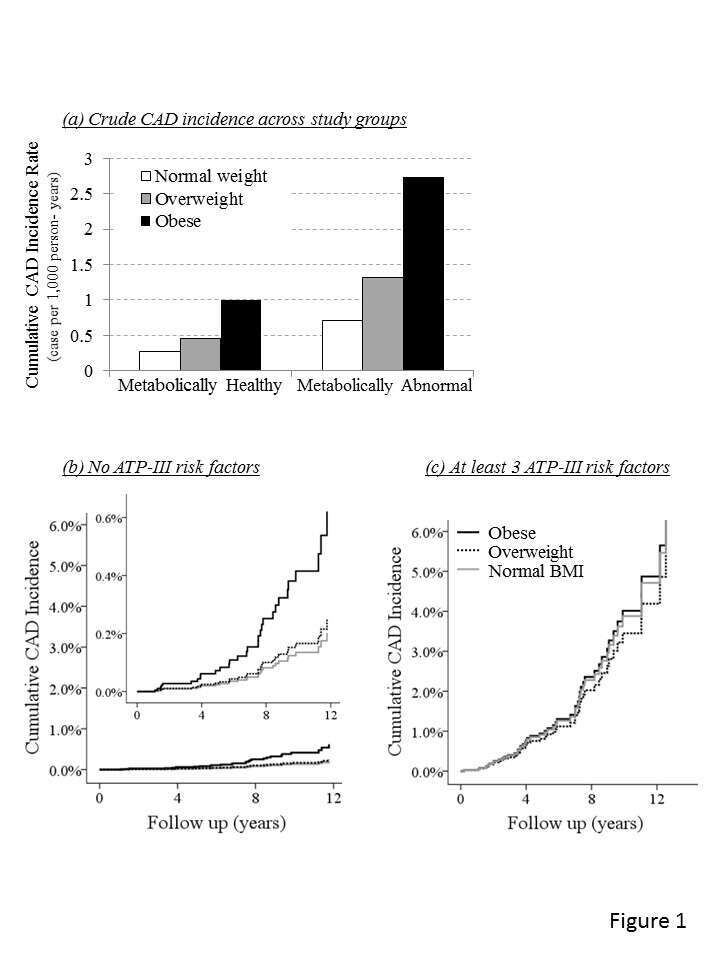Objective: Whether obesity is a risk factor for coronary artery disease (CAD) in individuals without other CAD risk factors remains controversial. Our aim was to determine CAD incidence over time among obese young adults without metabolic risk factors.
Methods: Incident angiography-proven CAD (>50% stenosis in at least one vessel) during a median follow-up of 6.1 years was assessed among 31,684 young men (mean age 31.2±5.7 years), of the MELANY cohort of the Israeli Defense Forces, who were stratified by BMI and the number of Adult Treatment Panel-III metabolic abnormalities. Metabolically healthy (MH) participants were defined as individuals without any of the ATP-III criteria, while metabolically abnormal (MA) included at least one abnormality from the above criteria. There were 599 (1.9%) obese (BMI ≥30 Kg/m2) individuals who were classified as MH. Cox proportional hazard models were used to assess the hazard ratio for incident CAD.
Results: There were 198 new cases of CAD that were diagnosed during 209,971 person-years of follow up and their incidence is shown in Figure 1a. In a multivariable model adjusted for age, family history of CAD, smoking status, physical activity, fasting glucose, lipid levels, blood pressure and WBC count, a higher CAD risk was observed among MH-obese (HR=3.08; 95%CI=1.10-8.68,p=0.033;Fig 1b), compared to MH-normal weight subjects. This risk persisted when BMI was treated as a time-dependent variable (HR=5.11; 95%CI=2.90-11.72,p=0.011), but was unchanged among those with a diagnosis of metabolic syndrome at enrolment (Fig. 1c). There was no interaction between BMI status and metabolic health status even when the definition of the later included the lack of family history of CAD, positive smoking history, high-normal LDL level, or sedentary life style (p of interaction>0.3).
Conclusions: Obesity is an important risk factor for incident CAD in young men even in the absence of other recognizable risk factors for CAD.


